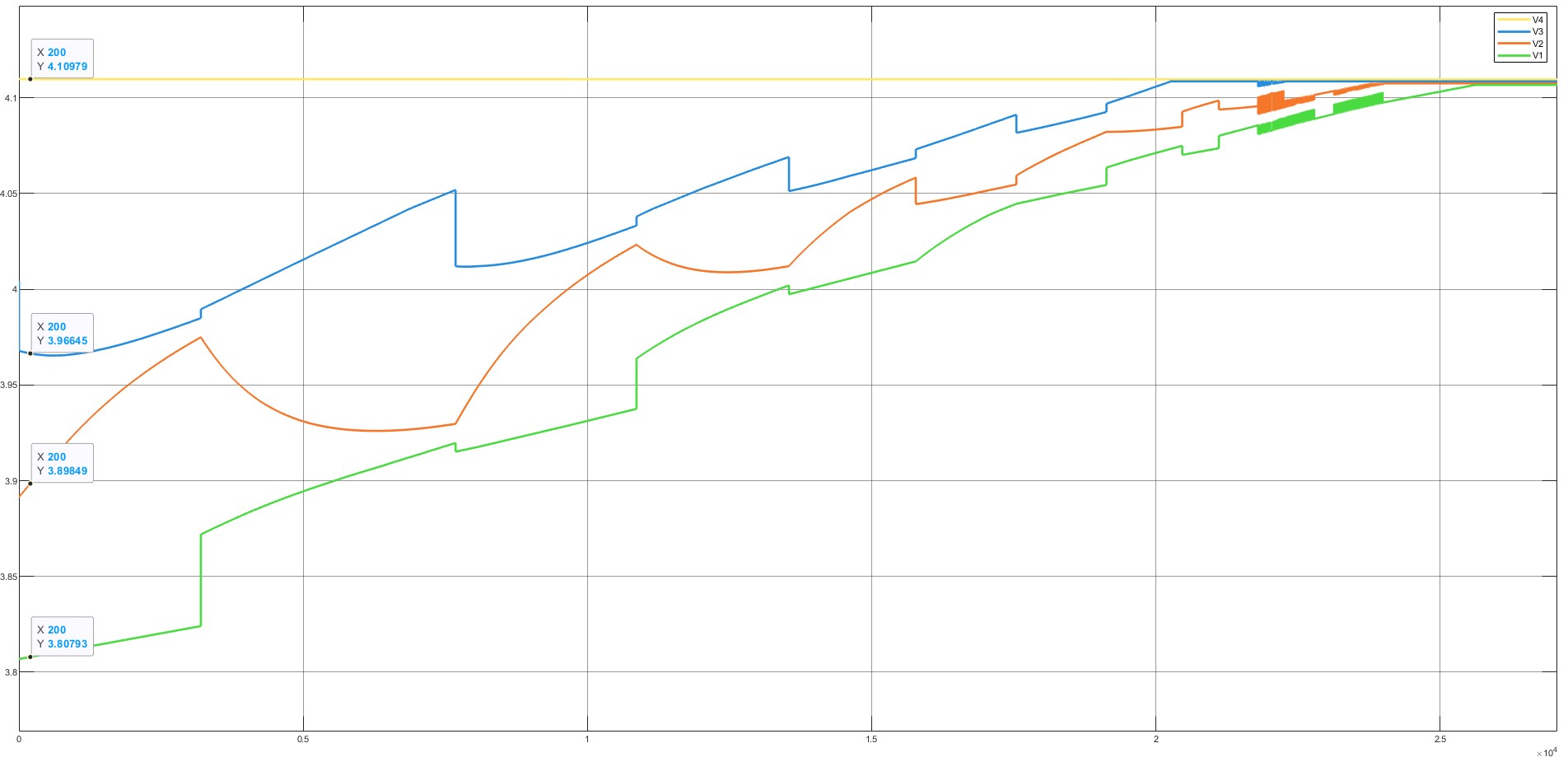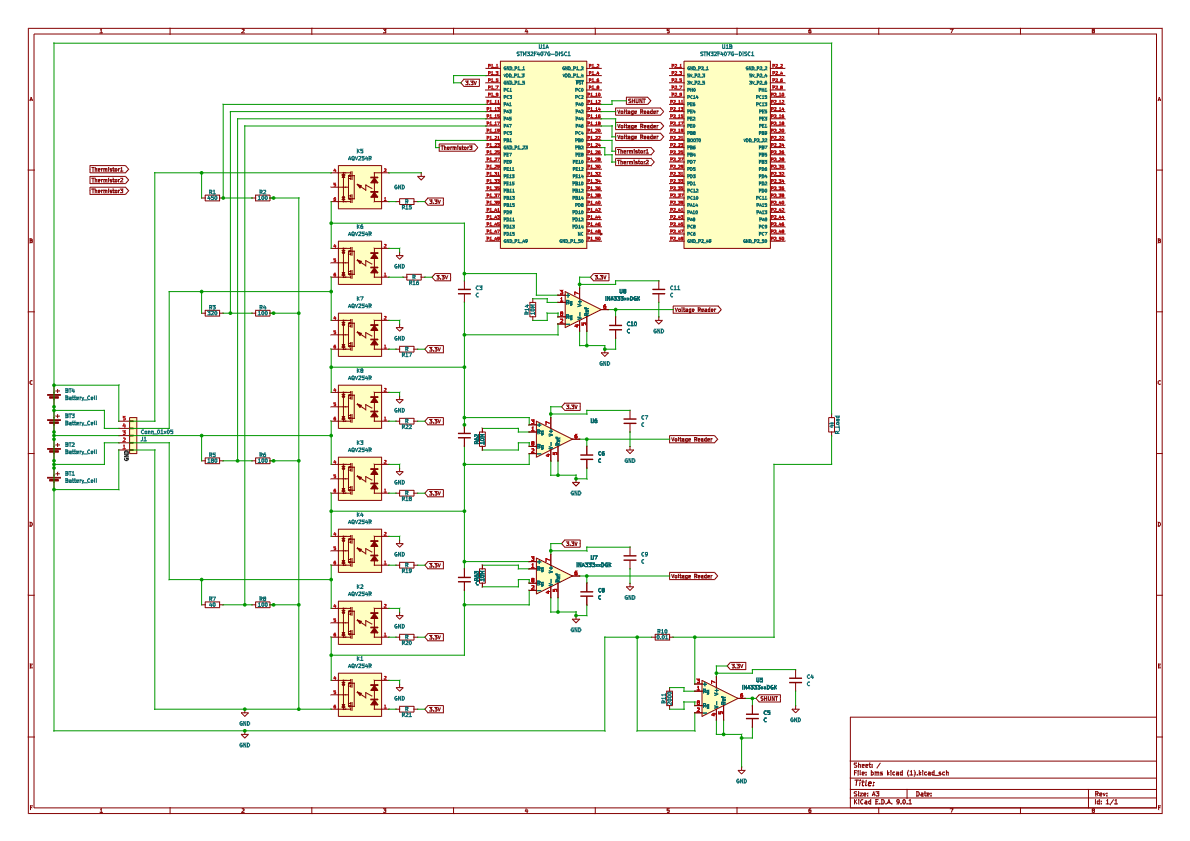Battery Health & Performance Management System
A custom-designed Battery Management System (BMS) for Li-ion batteries, featuring active cell balancing, real-time monitoring, and a bespoke PCB.
Project Abstract
This project covers the study and early development of a Battery Management System for Lithium-ion batteries. A BMS is crucial for ensuring the safety, reliability, and performance of Li-ion batteries by monitoring key data like voltage, current, and temperature. This system focuses on active cell balancing to prevent overcharging, overheating, and capacity loss. The design utilizes an STM32F407 Discovery Board as its core, integrated with custom circuitry on a self-designed PCB. A novel control algorithm was developed to manage active cell balancing, and its effectiveness was successfully validated through extensive MATLAB/Simulink simulations for both charging and discharging states.
Key Features & Technologies
- Central Controller: Utilized the high-performance STM32F407 Discovery Board for real-time data processing, control logic, and peripheral management.
- Custom PCB Design: Designed and fabricated a dual-layer PCB in KiCad to serve as a motherboard, integrating all system components, including the STM32 board, sensor circuits, and balancing hardware.
- Active Cell Balancing: Implemented a capacitor-based active balancing circuit controlled by a custom-developed algorithm. The system uses AQV252G Photomos relays for efficient charge shuttling between cells.
-
Real-Time Monitoring: Integrated sensors for comprehensive monitoring:
- Voltage Sensing: INA333 instrumentation amplifiers for precise differential voltage measurement of cells and balancing capacitors.
- Current Sensing: A shunt resistor paired with an INA333 amplifier to measure pack current.
- Temperature Sensing: TMP36GZ sensors to monitor cell temperatures and prevent thermal runaway.
- Algorithm & Simulation: Developed and validated the entire system logic in MATLAB/Simulink, simulating various operational states to ensure the control algorithm's robustness before hardware implementation.
Visual Gallery
Key visuals from the design and fabrication process, including schematics, PCB layouts, simulation models, and the final hardware assembly.
Project Reports
This project consists of two main parts: theoretical research and practical application. You can view the relevant PDF reports in a new tab using the buttons below.





